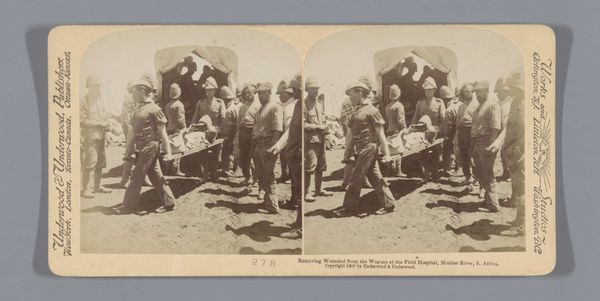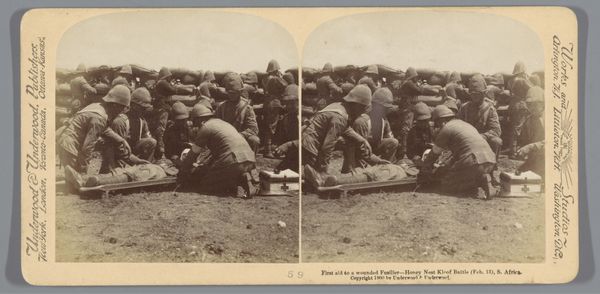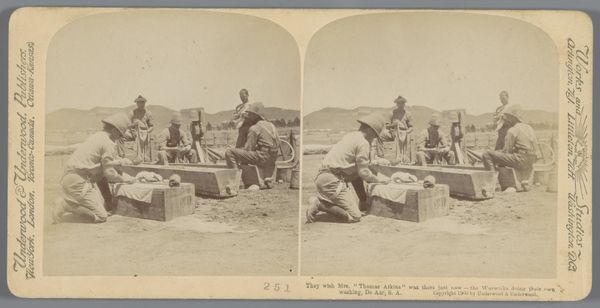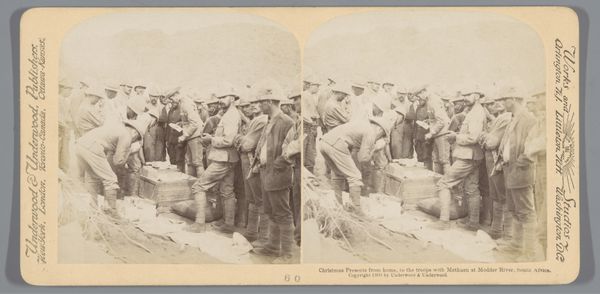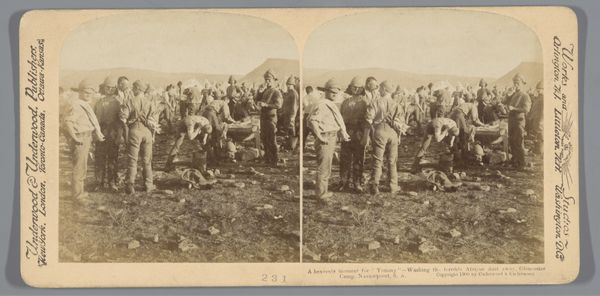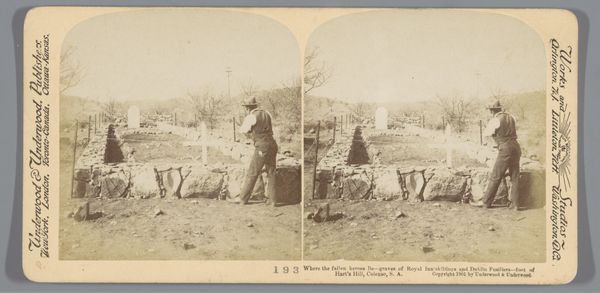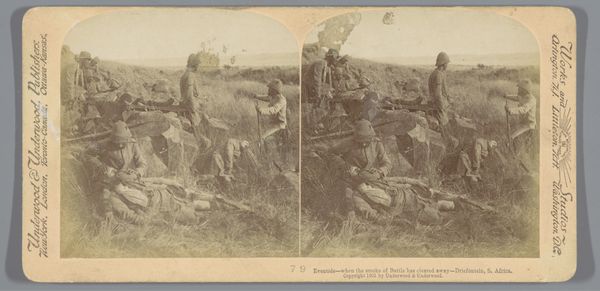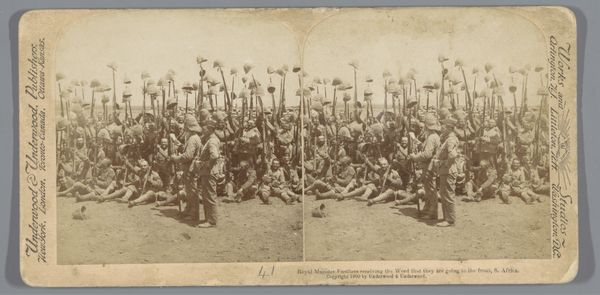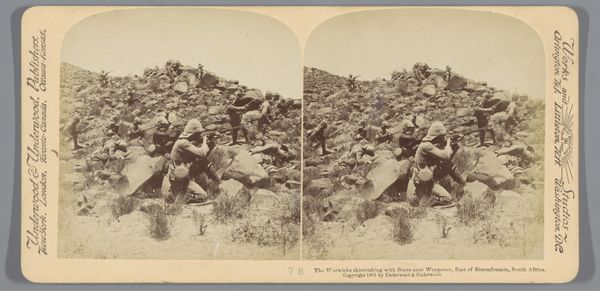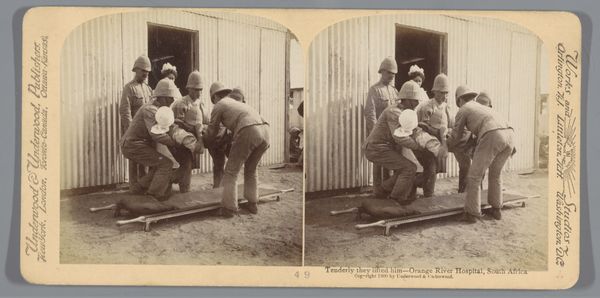
photography, gelatin-silver-print
#
landscape
#
photography
#
photojournalism
#
gelatin-silver-print
#
realism
Dimensions: height 88 mm, width 178 mm
Copyright: Rijks Museum: Open Domain
Curator: This gelatin-silver print, "Groep mannen met zakken haver in De Aar, Zuid-Afrika," taken around 1900, presents a seemingly simple scene of men carrying sacks. But what stories lie beneath the surface? Editor: It looks like a work scene, very documentary. The bags dominate the frame. It almost feels…oppressive, maybe because of the sheer volume of sacks and the men bent under their weight. What strikes you about this work? Curator: It's crucial to contextualize this image within the Anglo-Boer War. The inscription, "Tons upon tons of Oats for Tommy's faithful friends," reveals it’s propaganda. The British used images like this to portray a benevolent image, showcasing their supply lines. But, what is unseen is how these actions affected the indigenous populations during wartime? Where is their story in this “realist” representation? Editor: So, what looks like simple documentation is actually carefully constructed to justify a certain narrative. Is there a way to discern who the workers are? Curator: Exactly! Are they willing participants, or laborers compelled by colonial power structures? Consider the economic exploitation inherent in colonialism. Labor like this, especially during wartime, was often forced or extracted through unjust means. Who benefits from the “oats for Tommy's faithful friends”? Who carries the burden? Editor: I see now. The visual "realism" is a facade. We must question what isn't being shown: the power dynamics and potential exploitation inherent in this colonial context. It's much darker now. Curator: Precisely. Art, especially photography from this period, serves as a potent reminder to critically analyze historical narratives and understand the complex social realities behind seemingly straightforward images. We can't separate the act of documenting from the historical, economic, and colonial framework in which these photos were created. Editor: Thank you. This definitely reshapes how I view historical photography.
Comments
No comments
Be the first to comment and join the conversation on the ultimate creative platform.
